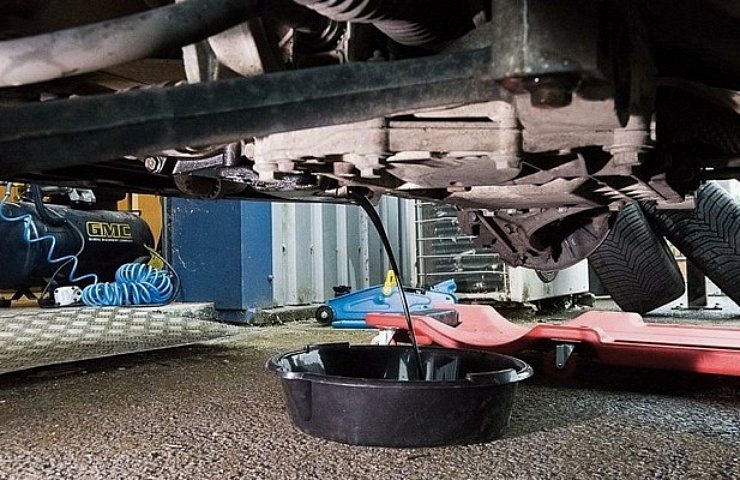Contents
An engine oil flush uses chemical additives to eliminate residue that forms in the engine over time. Sludge can develop if you use low-quality oil or leave your car unused for an extended period. Gunk can also build up through the use of low-quality fuel, incomplete combustion, and age.
Shop now engine flush cleaners
In other words, an engine flush may be helpful if you haven’t been changing your oil according to the manufacturer’s recommendation. You may also need an engine flush if your car has been parked for months or if you only take short drives. Engine sludge can become an issue when the oil doesn’t warm up enough during a drive or the engine has been dormant.
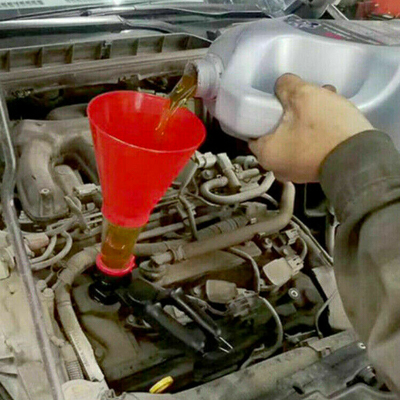
A funnel makes adding engine oil or flush easy.
As residue builds up over time, it can cause the engine and its components—like spark plugs and valves—to malfunction. So you may need an engine flush if your vehicle has recorded high mileage, say 100,000 miles or more, even if your car is driven often and well-maintained.
When changing from traditional to synthetic oil, an oil flush will remove every trace of conventional oil from the engine. If you purchased a used car with no proper maintenance history from the previous owner, that’s another good reason for a flush.
Benefits of an Engine Oil Flush
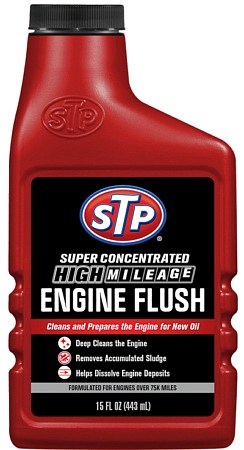
STP oil flush for high-mileage engines
An engine flush can save you from many performance problems, preventing costly repairs.
- Improved engine performance – Engine flushing eliminates and prevents gunk buildup in your engine. While engine flushing doesn’t necessarily translate to more power, it will clean the engine of deposits. A clean engine will always perform well, which invariably boosts fuel economy.
- Better oil flow – Sludge in the engine limits oil flow. After a flush, engine oil can flow better and ensure adequate lubrication, which decreases friction and prevents overheating.
- Protection for engine components – Engine flushing is a preventive measure that helps avoid complete engine breakdown and can extend engine life. It also eliminates gunk from individual components, like the cam lobes, so that they can work effectively throughout their expected lifespan.
- Reduced emissions – Buildup that forms due to incomplete combustion can cause piston rings to stick. Stuck piston rings can cause oil to seep into the combustion chamber and burn, increasing exhaust emissions. An engine flush reduces oil consumption and tailpipe emissions.
Four Methods
An engine flush is usually done by pouring flush additives into the crankcase to remove gunk buildup over time. A flush should be performed just before a scheduled engine oil change.
Read this: A Visual Guide to Changing Your Oil
Here are four ways to perform an engine flush for gasoline or diesel engines. Always refer to the instructions on the flush additive bottle. Before you start, gather these items:
- The flush additive
- Fresh motor oil
- Clean cloth or rags
- Funnel
- Oil pan or bucket
- New oil filter
- Ratchet wrench and sockets

A oil drain pan and catch tray keep garage floors clean.
Method 1: Go for a short trip after adding the flush
- Drain a small amount of engine oil, then add the chemical additive through your engine’s oil filler port. Make sure to replace the cap.
- Drive the car for a short distance. This will warm the engine up and allow the oil mixed with the additive to flow.
- As the liquid flows, it breaks down any residues in the engine, trapping them in the oil and, eventually, the oil filter or sump.
- Change the oil as you would typically and replace the oil filter.
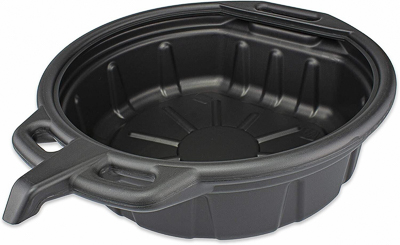
An open oil drain pan with a built-in pouring spout
Method 2: Idle for some minutes after adding the flush
- Remove a small quantity of engine oil from the engine and add the flush additive.
- Start the car and let it idle for 10 to 15 minutes to warm up the engine and allow the mixed engine oil to flow.
- Any sludge in the engine will be suspended in the oil, ending up in the filter or oil sump.
- Perform your regular oil change and install a new filter.
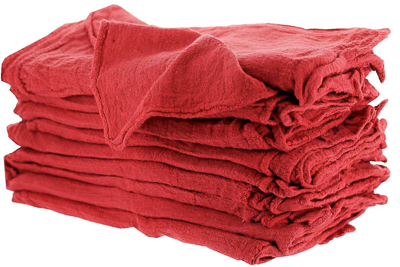
Red shop rags are made for automotive use.
Method 3: Warm the engine before adding the flush
- Bring the car to optimal operating temperature. This will help the oil flow.
- Turn off the engine and add the flush additive.
- Let the car idle for 10 to 15 minutes, depending on how much gunk is in your engine.
- As the mixed oil flows through your engine, it removes buildup and suspends it in the oil, eventually settling in the filter or sump.
- Shut off the engine and change the oil and oil filter as usual.
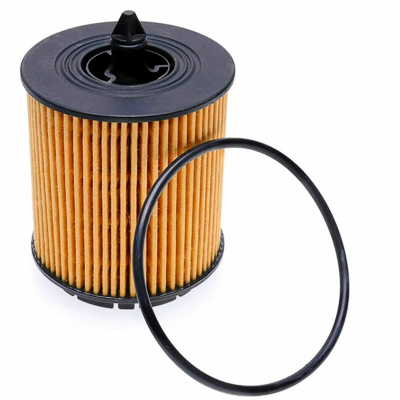
A cartridge type oil filter with sealing o-ring
Method 4: Empty the oil and refill after adding the flush
- Drain the oil from your engine as you would during a routine oil change.
- Pour fresh oil into the engine and add the additive.
- Turn on the engine and let it idle for a few minutes to warm it up and allow the already mixed oil to flow freely.
- This loosens any deposits in the engine, which get suspended in oil and end up in the oil filter or sump.
- Change the oil while it is hot and flowing more freely, then replace the oil filter.
Cost for an Engine Flush
Having a mechanic perform an engine oil flush usually costs between $50 and $100, with additives adding $10 to $30. Of course, the exact fee depends on your additive brand and type, who is doing the job, and the method.
Shop now for automotive fluids and chemicalsYou will save labor costs if you do it yourself, as you only need to buy the flush additive and engine oil. The first three methods outlined above save the most money. However, expect to pay more if a mechanic utilizes the last method.

